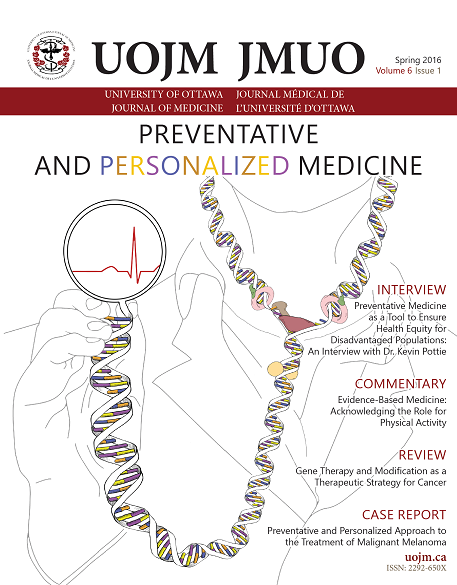Medicine and the Art of Seeing
Main Article Content
Abstract
This Humanities in Medicine article is an examination of the use of formal fine arts training in medical curricula to enhance diagnostic skills. A great amount can be discerned about pathology and pathophysiology using visual cues. Conventional medical education stresses the importance of physical diagnostic skills but often omits explicit teaching on how to methodically observe for information that could be useful for diagnosis. The current curriculum could be greatly complimented by the study of fine arts, which deals directly with the careful observation, description, and interpretation of the visual world.
Cet article sur la médecine et les humanités est un aperçu sur la pertinence d’incorporer une formation formelle des beaux-arts dans le curriculum médical afin d’optimiser l’habileté des cliniciens à poser un bon diagnostic. L’utilisation de repères visuels est d’une grande utilité pour discerner la pathologie et la physiopathologie de différentes maladies. L’éducation médicale conventionnelle souligne l’importance de l’examen physique lorsqu’on doit poser un diagnostic, mais néglige parfois l’enseignement d’une approche méthodique qui utilise activement l’observation afin de repérer des informations qui pourraient être très utiles dans le diagnostic d’un patient. Le curriculum actuel pourrait très bien incorporer l’étude des beaux-arts, car celle-ci implique une observation, une description et une interprétation du monde visuel qui nous entoure.
Article Details
- Authors publishing in the UOJM retain copyright of their articles, including all the drafts and the final published version in the journal.
- While UOJM does not retain any rights to the articles submitted, by agreeing to publish in UOJM, authors are granting the journal right of first publication and distribution rights of their articles.
- Authors are free to submit their works to other publications, including journals, institutional repositories or books, with an acknowledgment of its initial publication in UOJM.
- Copies of UOJM are distributed both in print and online, and all materials will be publicly available online. The journal holds no legal responsibility as to how these materials will be used by the public.
- Please ensure that all authors, co-authors and investigators have read and agree to these terms.
- Works are licensed under a Creative Commons Attribution-NonCommercial-NoDerivatives 4.0 International License.
References
2. Reilly JM, Ring J, Duke L. Visual thinking strategies: a new role for art in medical education. Fam Med. 2005;37(4):250–252.
3. Fildes L. The Doctor. Available from: http://www.tate.org.uk/art/artworks/ fildes-the-doctor-n01522.
4. Pope R. Mr S is told he will die. The Robert Pope Foundation.
5. Naghshineh S, Hafler JP, Miller AR, et al. Formal art observation train¬ing improves medical students’ visual diagnostic skills. J Gen Intern Med. 2008;23(7):991–997.
6. Shapiro J, Rucker L, Beck J. Training the clinical eye and mind: using the arts to develop medical students’ observational and pattern recognition skills. Med Ed. 2006;40(3):263–268.

